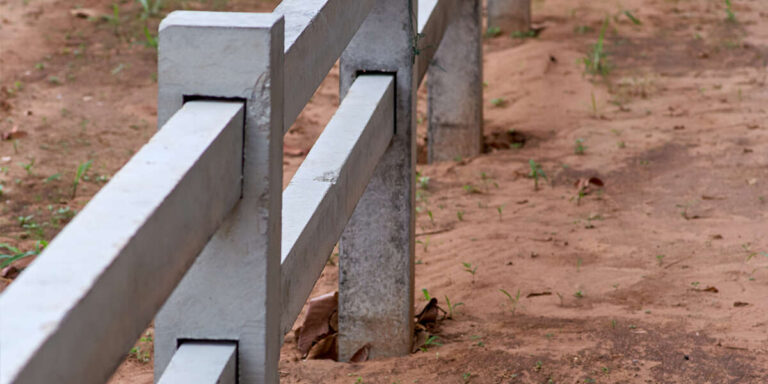How Long Does It Take to Roof a House by Yourself: Guide
Have you ever found yourself staring at your roof, wondering if you could tackle the project on your own? Roofing your house by yourself is a bold and rewarding challenge, but it comes with questions, primarily: “How long will it take?”
Understanding the timeline is crucial, not just for planning, but also for ensuring you have the right resources and energy to see it through. Imagine saving money while honing a new skill, all while having the satisfaction of knowing you did it yourself.
But before you dive in, let’s explore the factors that will determine how long this project will take and help you decide if it’s the right move for you. Stay with us to discover the insights and tips that can make your roofing project a successful one.

Credit: buildmax.com
Factors Influencing Roofing Time
Roofing your house by yourself demands careful planning. Understanding the factors that influence roofing time is crucial. These elements can affect how quickly and efficiently you complete the project. Let’s explore the key factors that play a role in determining your timeline.
Size Of The Roof
The size of the roof significantly impacts roofing time. Larger roofs require more materials and labor. You will spend more time covering the surface. Smaller roofs might seem easier, but precision still matters. Taking accurate measurements and planning your approach saves time.
Type Of Roofing Material
The choice of roofing material affects installation speed. Asphalt shingles are popular for their ease of installation. Metal roofing demands more skill and time. Wood shingles require careful placement. Each material has its own set of challenges and benefits.
Complexity Of Roof Design
Roof design complexity directly influences roofing time. Simple designs are easier to manage and quicker to install. Complex designs with multiple angles require more precision. Extra features like skylights or chimneys add to the timeline. Proper planning and execution are key.
Weather Conditions
Weather conditions play a crucial role in roofing projects. Rain or snow can delay work and affect safety. Ideal conditions involve dry, calm weather. Monitoring forecasts helps in scheduling tasks. Weather unpredictability can extend your timeline.
Required Tools And Materials
Roofing a house by yourself is a complex task. It requires careful planning and preparation. Having the right tools and materials is crucial. This ensures efficiency and safety. Below is a guide on what you need.
Essential Tools List
Tools make roofing easier and faster. A hammer is vital for nailing shingles. You need a ladder to reach the roof safely. A tape measure helps in cutting materials accurately. Have a roofing nail gun for faster work. A utility knife is essential for cutting shingles. Use a chalk line for straight guidance. A roofing shovel assists in removing old shingles.
Necessary Safety Equipment
Safety should be your top priority. Wear a hard hat to protect your head. Safety glasses shield your eyes from debris. Non-slip shoes offer better grip on the roof. Use a safety harness to prevent falls. Gloves protect your hands from sharp edges. Ear protection guards against loud noises. Reflective clothing ensures visibility to others.
Material Selection Tips
Choose materials wisely for a durable roof. Asphalt shingles are popular for their affordability. Metal roofing is durable and long-lasting. Clay tiles offer a classic look but are heavy. Wood shingles give a natural appearance but need maintenance. Consider climate, budget, and style preferences. Quality materials ensure the roof lasts longer.
Preparation Steps
Before starting a roofing project, preparation is key. Proper planning ensures a smoother, safer process. It helps avoid unnecessary delays and mistakes. Here are crucial preparation steps to guide you.
Inspecting The Roof
Begin by inspecting your roof thoroughly. Look for signs of damage or wear. Check for missing shingles or leaks. Ensure the structure is sound. A strong base supports new roofing materials. Identifying issues early saves time and resources.
Calculating Material Needs
Accurate material estimation is essential. Measure the roof’s dimensions. Calculate the total area to be covered. Consider roofing material type and required quantities. Factor in extra materials for waste and repairs. Proper calculations reduce costs and ensure efficiency.
Setting Up Safety Measures
Safety must be a top priority. Start by organizing safety equipment. Secure ladders and scaffolding correctly. Wear protective gear such as helmets and gloves. Ensure stable footing and clear any debris. Safety measures prevent accidents and injuries.

Credit: www.familyhandyman.com
Step-by-step Roofing Process
Roofing your house by yourself can be a rewarding task. Understanding the step-by-step process is crucial for success. Each stage demands attention, time, and effort. This guide breaks down the essential steps. Follow them to ensure a well-installed roof.
Removing Old Roofing
Begin by removing old roofing materials. Use a shovel or pry bar for this task. Dispose of debris responsibly. Wear protective gear to prevent injuries. This step prepares the surface for new materials.
Repairing Roof Structure
Inspect the roof structure for damage. Look for rotten wood or loose nails. Repair these issues promptly. Use sturdy materials for reinforcement. A solid structure supports the new roof effectively.
Installing Underlayment
Lay underlayment over the roof deck. This layer protects against moisture. Use a roll of roofing felt or synthetic underlayment. Secure it with nails or staples. Ensure even coverage across the entire surface.
Laying The New Roof
Start laying the new roof materials. Follow manufacturer’s instructions carefully. Begin at the lowest point and work upwards. Ensure proper alignment and spacing. Secure each piece firmly to withstand weather conditions.
Time Estimation For Diy Roofing
Taking on the challenge of roofing your house by yourself can be both rewarding and daunting. Understanding how much time you’ll need is crucial for planning and executing your project smoothly. Whether you’re a seasoned DIY enthusiast or a beginner, accurate time estimation can prevent unnecessary stress and keep your project on track. But how do you figure out the time it will take for your specific roof? Let’s dive into the details!
Average Time For Different Roof Sizes
The size of your roof plays a significant role in how long the project will take. Generally, a small roof of around 1,000 square feet might take an average person about 3-4 days to complete. Medium-sized roofs, around 1,500-2,000 square feet, can extend to 5-6 days. Larger roofs, exceeding 2,500 square feet, could demand over a week of dedicated work.
Consider breaking the task into manageable sections. This approach not only helps in organizing work but also boosts your morale as you see tangible progress. Does your roof fall into one of these categories? Knowing its size helps you set realistic goals and plan your days effectively.
Impact Of Experience Level
Your experience level dramatically influences your roofing speed. If you’ve tackled similar projects before, you might find yourself completing tasks quicker. A novice, however, might need extra time to learn the ropes and avoid mistakes.
Think about your previous experiences with home improvement. Did they prepare you for roofing? Assess your skills honestly and consider seeking advice from more experienced DIYers to fast-track your learning curve.
Adjusting For Unforeseen Delays
No project is immune to unexpected delays. Weather conditions, supply shortages, or personal commitments can disrupt your timeline. Always factor in a buffer period to accommodate these potential setbacks.
Reflect on past projects. How did you handle delays? Building flexibility into your schedule will keep stress levels low when the unexpected occurs. Have you thought about the steps you’ll take if a surprise delay pops up?
DIY roofing demands careful planning and realistic expectations. By considering roof size, experience level, and possible delays, you can estimate the time needed more accurately. Are you ready to embark on this project with confidence?

Credit: parade.com
Tips For Efficient Roofing
Taking on a roofing project yourself can be challenging and time-consuming. Factors like roof size, material type, and skill level impact the duration. Expect the process to take several days if you’re inexperienced, as careful planning and execution are crucial for success.
Tackling a roofing project by yourself can be both exciting and daunting. To ensure you stay on track and make the process more manageable, consider some effective tips for efficient roofing. These strategies will help you work smarter, avoid pitfalls, and maintain safety throughout the project.Organizing Your Workspace
A well-organized workspace is crucial for any successful roofing job. Before you begin, gather all necessary tools and materials in a convenient location. This can save you from multiple trips up and down the ladder, which is both time-consuming and exhausting. Create a checklist of supplies, including shingles, nails, a hammer, and safety gear. Having everything at arm’s reach keeps your workflow uninterrupted and minimizes unnecessary stress. Think of this preparation as setting the stage for a smooth performance.Avoiding Common Mistakes
It’s easy to overlook small details that can lead to bigger issues later on. One common mistake is skipping the underlayment, which acts as a protective barrier against moisture. Installing it can prevent leaks and extend the life of your roof. Pay attention to the weather forecast. Rain can not only delay your work but also compromise the quality of your installation. Start your project during a dry spell, and you’ll reduce risks and frustrations.Maintaining Safety Standards
Safety should be your top priority while roofing. Always wear protective gear such as gloves, a hard hat, and non-slip shoes. These items can prevent injuries that could halt your project unexpectedly. Ensure your ladder is stable before climbing. A secure footing gives you peace of mind and allows you to focus on the task at hand. Have you ever heard of the buddy system? It’s wise to have someone spot you while you work, providing an extra layer of safety. By keeping these tips in mind, you’ll be well on your way to completing your roofing project efficiently and safely. What strategies have you found effective in your DIY projects? Share your experiences and help others navigate their roofing journey.When To Seek Professional Help
Tackling roofing alone can be time-consuming and challenging. Consider professional help if work extends beyond a week or safety concerns arise. Expert guidance ensures quality and safety without unnecessary delays.
Tackling a roofing project on your own can be an empowering experience, but knowing when to seek professional help is crucial. It’s easy to be swept up in the excitement of DIY, but some situations demand expertise and experience. Before you find yourself overwhelmed, consider the following factors that can guide your decision.Identifying Complex Roofing Issues
Some roofing problems aren’t visible to the untrained eye. A small leak might seem like a quick fix, but it could indicate structural issues that require professional intervention. Have you ever found yourself patching up the same spot repeatedly? This could be a sign that a deeper problem exists. Complex designs, like those with multiple peaks or intricate patterns, also need expert handling. Have you thought about how these features might complicate your task? Professionals are equipped to deal with such challenges efficiently and safely.Recognizing Personal Limitations
Assess your skills honestly. Are you comfortable working at heights? Do you have the necessary tools and safety equipment? Confidence is key, but overestimating your abilities can lead to costly mistakes. Consider the time you can dedicate to the project. Roofing is a time-intensive task, and underestimating this can leave your home exposed to weather damage. Do you have the spare hours needed to complete the job promptly?Benefits Of Professional Roofing Services
Professionals bring expertise and efficiency to the table. They can identify issues you might miss, ensuring a thorough and lasting repair. Imagine the peace of mind knowing your roof is in capable hands. Hiring a professional can also be more cost-effective in the long run. How often do DIY projects incur unexpected expenses? Professionals can prevent this with accurate estimates and fewer errors. By considering these points, you can make an informed decision about when to take on a roofing project yourself and when it’s best to call in the experts. Your roof is a critical part of your home, and ensuring it’s done right is essential.Frequently Asked Questions
How Long Does Diy Roofing Take?
DIY roofing typically takes between a few days to a week. The timeline depends on your experience, house size, and weather. Allocate extra time for unexpected challenges. Proper planning and preparation can help ensure a smoother process.
What Factors Affect Roofing Time?
Several factors influence roofing time: your experience, house size, roof complexity, and weather conditions. Experienced roofers can work faster. Complex roofs or bad weather can slow progress. Proper planning helps mitigate these delays.
Can One Person Roof A House Alone?
Roofing a house alone is challenging but possible. It requires time, patience, and careful planning. Enlist help for safety and efficiency. Larger or complex roofs may need extra hands. Safety should always be the top priority.
What Tools Are Needed For Diy Roofing?
Essential tools for DIY roofing include a hammer, roofing nails, ladder, safety gear, and shingles. Additional tools might include a roofing nailer, utility knife, and measuring tape. Having all necessary tools beforehand ensures a smoother roofing process.
Conclusion
Roofing a house by yourself demands time and patience. Expect a few weeks. The timeline depends on your skill and the house size. Weather conditions can also affect progress. It’s important to plan and prepare. Gather all necessary tools and materials.
Safety should be your top priority. Consider asking for help from friends or family. This could speed up the process. Remember, it’s a learning journey. Enjoy each step. Completing it brings great satisfaction. You’re not just building a roof, but also new skills and confidence.
Happy roofing!





